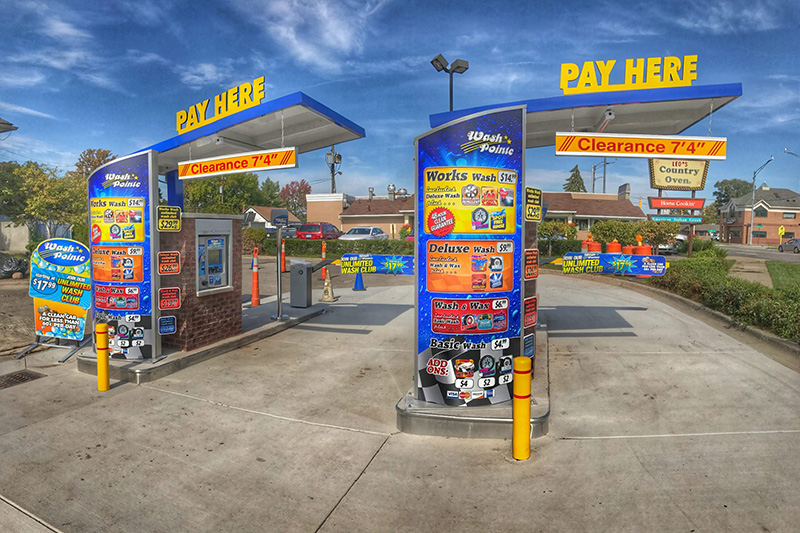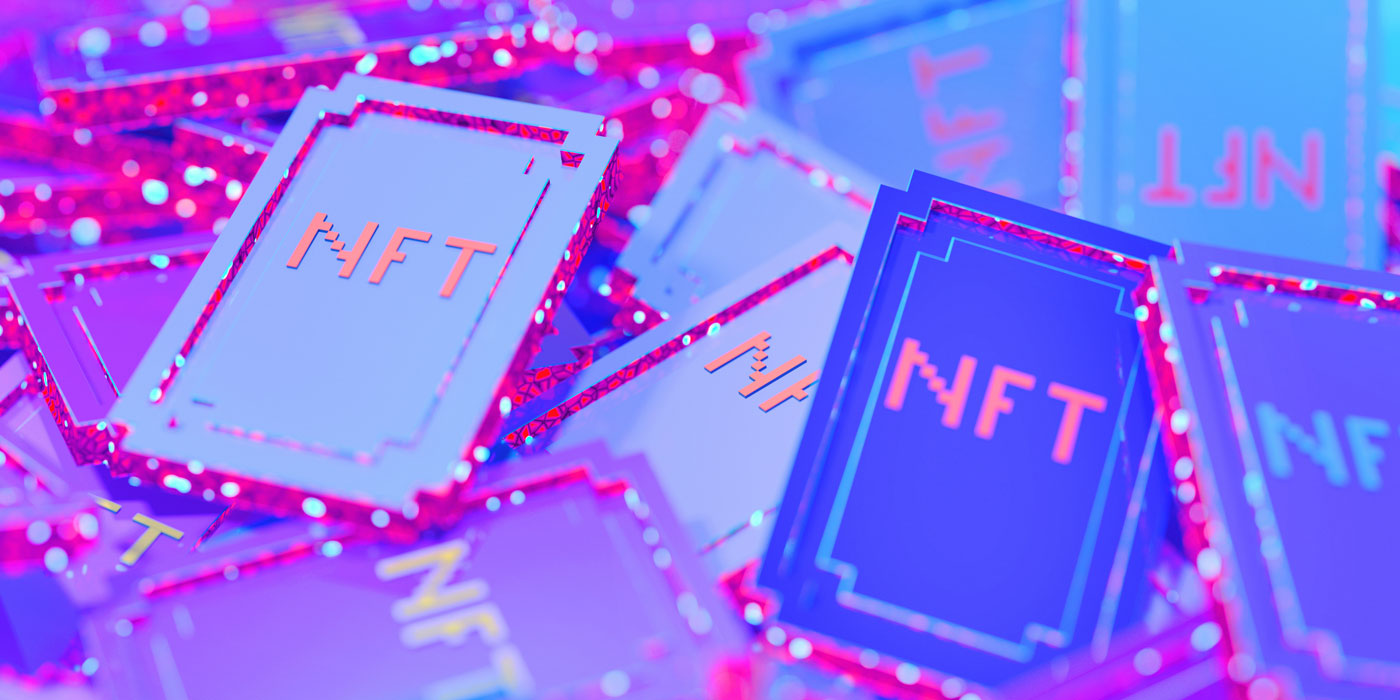As the car care industry has increased automation and technology usage to fight climbing labor costs, the day-to-day functions of carwash businesses have evolved. Today, signage and automated pay terminals frequently greet customers instead of frontline employees. Wash package selection and the payment process are often completed before a vehicle even approaches the facility or any on-site workers.
No time to read this article? Listen to it instead!
Because of this, modern carwash menus are called on to be sales workhorses, especially in high-traffic operations. The most effective menus adequately showcase all wash packages, upsell additional services and promote the benefits of unlimited wash programs. Even after a wash package is selected, additional menus and signage can promote popular or new services to customers as they wait in line or move through the tunnel.
Due to its importance, perfecting a carwash menu is a challenge that can require years of industry experience. Though menu updates are now a carwash best practice, creating the best fit for a business depends on many factors, and changes often require a period of active testing. This article covers more about how successful washes generate persuasive and beneficial messaging via tested menus displayed on pay terminals and wash signage.
Upselling services
Pushing customers towards the packages that provide the best value and superior results is an important best practice for every carwash. A well-thought-out menu will lead customers to the packages that an operator wants selected, according to Sean McBride, director of key accounts with Cleaning Systems Inc. First, think through and decide which value-added services are must haves — wheel cleaning, triple foam, waxes, etc. “Package these together to create a great value proposition so that the consumer automatically thinks, ‘That’s a no brainer, a great value for the money,’” McBride suggests.
Another upsell trend for carwashes is creating a menu that actually displays and illustrates the different processes and services. This menu style prevents the use of too much verbiage on the display. This makes the communication clear and concise and lets customers know exactly what they are getting for their money, McBride states.
Bobby Jones, general manager with TSS Inc., explains that conveying value to customers is the first step a menu can take towards generating significant upsells. A carwash can display value visually by showing visitors why they should upgrade to the top package using a digital menu. If the digital display can actually show the wash experience that a customer receives when he or she enters the tunnel — before payment is received — owners should see a big percentage of people willing to upgrade.
“An example would be if you had an amazing light show at your wash,” Jones says. “If you [pay] for the bottom three washes on a four-wash menu, you do not receive the light show, but if you purchase the top package, you receive the light show. If you can convey that before they enter the wash and market it properly, we find a lot more people convert to the top package.”
Another best practice for menu upselling is showcasing the monthly wash program prices right underneath regular package pricing, Jones notes. Many wash operators are looking to take advantage of the reoccurring revenue that monthly membership plans provide. But, if the monthly pricing is not readily visible, the menu will not do a good job selling memberships.
Operators should make sure monthly pricing is visibly accessible in a way where customers can see the apparent value the program offers. For example, a $19 single wash price can be displayed next to a $35 monthly wash program cost. Here, a carwash owner can show that paying for two washes a month is more expensive than receiving unlimited washes for a month. Jones reveals that menu designers try to clearly communicate the value by stacking the two prices on top of each other. The customers’ eyes will quickly gravitate towards the monthly price, and they will clearly understand what the costs associated with each option are.
Art versus science
Often, both art and science affect the process of developing the perfect menu design. Artistically speaking, color is frequently used as a service confirmation when a customer interacts with a carwash menu. McBride states that color can be used to provide immediate gratification so that customers know they are getting the services selected. This mirrors operation in the tunnel or bay where there are now different colors used for soaps, polishes and conditioners.
Another art-based best practice is adding visual icons to signage. Jones notes that menu designs should build from the bottom up and drive customers towards the top package. This starts with the basic packages being displayed only as text. As the menu goes up, the design is loaded with icons visually showing what a buyer receives. For instance, if the added service is tire shine, the menu shows a tire. If the service is hot wax, hot wax is represented in some manner.
That said, the menu design should not overwhelm customers, Jones warns. Try to use a balance when stepping up the icons, and remember the idea of customers being able to identify their needs quickly. If someone’s number one concern is the vehicle’s tires, he or she should not have to search a huge list to find the desired service.
“You should visually be able to pull up, quickly identify what you’re looking for and move through the wash,” Jones continues. “This will increase wash throughput and generate additional revenue.”
The science of menu creation can have a lot to do with a wash’s physical location and local market. There are distinct differences in how East Coast and West Coast washes market to their customers, according to Jones. On the East Coast, there is the heavy influence of winter salt removal. On the West Coast, washes are called on to remove bird droppings and love bugs during spring and summer. Another consideration is calculating the pricing that the location or geography warrants. The average top package pricing in the Midwest is lower than what is charged on the East or West Coast.
Related: Carwashing by season
McBride states that internet research is an important tool for operators wanting to learn more about the science of carwash menus. A wealth of information is readily available to owners and managers at any time from the privacy of their home or office. Additionally, trade show venues and road shows that offer a hands-on perspective can help educate owners. Leveraging the research and gathered examples with industry suppliers is probably the best route to take, as an operator will definitely need to include local considerations as well.
Designing and testing
The menu development process Jones recommends involves an operator planning a consulting phase with a design specialist. The process will include consideration of three points:
- The best price structure for the wash’s location
- Engaging design elements
- Industry best practices for menu layout.
These three factors are encapsulated into a consultative experience, and then the menu is built with the owner accordingly. Other considerations that may come into play are the service icons, naming of the packages, total number of packages and logo placement. Jones explains that these are ideas that should be discussed up-front during the design process.
Regarding testing, operators often push the new menu out first and foremost and then refine it based on approximately six months of sales, Jones reveals. Most carwashes do not necessarily run the A vs. B testing that is typical in advertising and marketing today. Instead, the process can be similar to trial and error. An owner can then order a different menu face six months down the road when an upgrade is pertinent.
When it comes to menu testing, the words “special” and “promotion” come to mind for McBride. Creating a temporary package or offer to gauge customer interest can be best to proof new ideas out. For example, what if a wash introduces a “rain guarantee” on the middle package for the month of May? Did more customers select it? Did it cost the wash too much profitability, or did it generate more sales? “We see retail stores do this all the time, but it’s not done enough in the carwash world,” McBride continues.
Time for a change?
A carwash owner should work to avoid customers getting complacent with a menu and its offerings. Jones states that a good rule of thumb would be to change the menu at least every 12 months. Operators do not necessarily have to change the content, but a good visual refresh is recommended. Businesses should never want anything to become stagnant on the marketing front.
“If you look at how often Starbucks refreshes their menu, their core competencies and concepts are always still there, but the way they present them varies greatly,” Jones points out. “It’s no different for carwashes. They should definitely be refreshing and renewing their marketing approach annually.” A marketing audit can be called on to show what is working, outline objectives, set goals and create a road map for completing the work and achieving results.
It can be tough to gauge how often a menu upgrade is needed, but there are certain warning signs operators should notice, McBride concludes. Has the ticket average and/or volume dropped? Have costs gone up but not prices? What is the competition doing? Asking these questions and/or reviewing monthly numbers are always best practices when reviewing your menu or offering. Even so, owners should be mindful that too much change can end up hurting a brand too.
Michael Rose is a freelance contributor.














